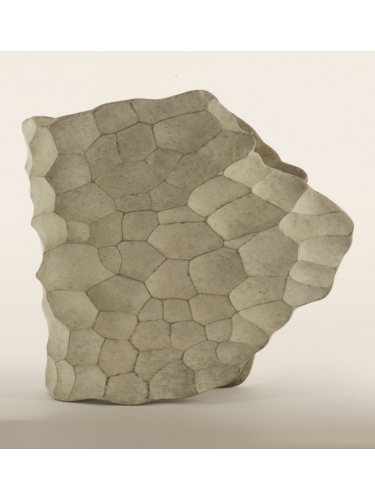
All Female Cast
eight invited artists
6th November - 15th December 2006
The stage is Pangolin Gallery and Foundry. Eight female artists are the players. They are supported by the founder and his staff, who engage with the artists at all stages of rendering their sculptures into bronze, and are ready to consult, advise and experiment.
The Cast
Halima Cassell
Ann Christopher
Deirdre Hubbard
Gabriele Koch
Charlotte Mayer
Eilís O'Connell
Antonia Salmon
Almuth Tebbenhoff
Prologue
The imperative that all bronze cast sculptures have in common is that their forms are created in another material first, and artists have to take into account everything that might happen during the transformation from clay, wood, mixed media, plastic – the list goes on – into bronze. The risks involved in the process of bronze casting may be calculated, avoided, or turned to advantage; and the cast may be amended during the finishing processes. Artists’ individual vocabularies often grow through their involvement with the medium and they undoubtedly benefit from the wide and deep knowledge of the experienced founder. Historically, artists’ use of bronze changed little until the twentieth and now the twenty-first century, although the procedures remain virtually the same. Greek and Roman artists invariably painted the surface of their bronze sculptures in colours that have rarely survived, although the bronze form has, with the surface altering through natural patination over centuries. In the course of time a vast range of patinating techniques has been developed, and today a bronze surface can be rendered into seemingly limitless colours and textures. In twentieth-century British sculpture, the bronzes of Henry Moore and Barbara Hepworth were examples of new and exciting practice. Together they moved bronze sculpture into realms of abstraction not attempted before although, in Europe, Auguste Rodin (1840-1917) and the Impressionist sculptors at the fin de siècle had laid the path open through their earlier innovation. Artistic development and collective experience gained through artists working in a myriad of other, and newer, materials have contributed much to their innovative use of bronze, which also includes casting from found objects and the human body – for example, Gavin Turk’s (b. 1967) casts of a cardboard box, black bin bag and sleeping bag, and Antony Gormley’s (b. 1950) body casts.
Today, artists who use bronze for their sculptures employ it both traditionally and differently. Some see bronze as a means of producing a single image in an edition, or as a way of replicating works made in less durable materials to give the piece a longer life. Some paint the surface, while others, such as David Nash (b. 1945), use the material qualities of bronze as part of the creative process – fire and earth, sand or wood coming into contact with the molten metal to create a unique form. Among other reasons, Damien Hirst (b. 1965) uses it for its strength for works made on a massive scale, achieving monumental casts as big as or even larger than the largest of Chinese Buddhas.
The Plot
The work of eight women sculptors who choose to have their sculptures cast at Pangolin illustrates some of the wide range of possibilities that bronze offers – each has an individual approach, they are not a group.
Epilogue
The sculptures in the exhibition are lasting evidence of the thoughts, dreams, and feelings of eight women. They are made as a result of female thinking, originated by the hands of women. This does not claim their greater value by argument raised through the issue of gender, but to place before the audience sculptures made by a female cast of eight, and for that audience to make of them what they will.
Ann Elliott
September 2006
Photographs by Steve Russell

